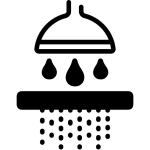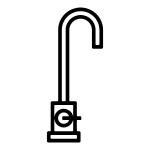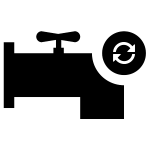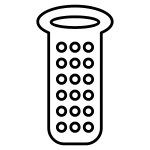Clean and safe drinking water is not a luxury—it’s a necessity. As water pollution increases, more and more households are turning to advanced filtration systems to ensure their water is free from harmful contaminants. If your water source is brackish or contains high levels of dissolved salts, a salt water filter for home could be the perfect solution for you.
At Cuoll, we understand the importance of pure water. That’s why we offer a range of water filters, water purifiers, and home improvement solutions designed to give you peace of mind. In this guide, we’ll dive deep into everything you need to know about salt water filters for home use.
2. What Is a Salt Water Filter for Home?
A salt water filter for home is a specialized filtration system designed to remove salt, minerals, and other impurities from saline water, making it safe and suitable for household use. These systems are often referred to as desalination filters or reverse osmosis (RO) systems, depending on the technology used.
Salt water filters are commonly used in:
- Coastal areas with brackish water supplies
- Homes using well water with high salinity
- Regions with hard water problems
3. Why You Might Need a Salt Water Filter
💧 1. High Sodium Content in Tap Water
High levels of sodium in drinking water can cause health issues, especially for people with high blood pressure or kidney concerns.
💧 2. Taste and Odor Problems
Salt in water can give it a metallic, bitter, or unpleasant taste. It may also affect the smell of your water and cooked food.
💧 3. Damage to Plumbing and Appliances
Salt-laden water can corrode your home’s plumbing and reduce the lifespan of appliances like dishwashers, washing machines, and water heaters.
💧 4. Skin and Hair Issues
Salt in water can dry out your skin and hair, especially during showers and baths. A bathtub with salt water can do more harm than good.
4. How Salt Water Filters Work
Most salt water filters for home use Reverse Osmosis (RO) technology. Here’s how it works:
- Pre-Filtration: Removes larger particles like sediment, rust, and chlorine.
- RO Membrane: Forces water through a semi-permeable membrane that removes up to 99% of salts, heavy metals, and impurities.
- Post-Carbon Filtration: Improves taste and odor of the filtered water.
- Storage Tank: Holds the purified water for later use.
Some systems also use UV sterilizers or activated carbon filters for extra purification.
5. Types of Salt Water Filters for Home
🌀 1. Reverse Osmosis (RO) Systems
- Best for drinking and cooking water
- Removes dissolved salts, lead, mercury, and other contaminants
🌀 2. Whole House Desalination Systems
- Treats all the water entering your home
- Ideal for bathing, laundry, and household cleaning
🌀 3. Distillation Units
- Heat water to create steam and remove salt
- Slower process but effective for drinking purposes
🌀 4. Ion Exchange Softeners (with Caution)
- Replace calcium/magnesium with sodium
- Not ideal if you’re trying to reduce salt intake
6. Choosing the Right Salt Water Filter for Your Needs
Here are some factors to consider:
| Factor | What to Consider |
|---|---|
| Water Source | Is it municipal, well, or coastal water? |
| Salt Levels | Get a water test to know the TDS (Total Dissolved Solids) |
| Usage | Drinking only vs whole-house |
| Budget | RO systems can start from $200 to $1000+ |
| Installation Space | Under-sink vs outdoor units |
✅ At Cuoll, we recommend consulting our free product guide or talking to an expert before purchase.
7. Salt Water Filter vs Regular Water Filter
| Feature | Salt Water Filter | Regular Water Filter |
|---|---|---|
| Removes Salt | ✅ | ❌ |
| TDS Reduction | High (90-99%) | Moderate |
| Technology | RO, Distillation | Carbon, UV, Sediment |
| Cost | Higher | Lower |
| Best For | Brackish/saline water | City water with mild issues |
8. Benefits of Using a Salt Water Filter at Home
💚 Healthier Water
Reduces harmful sodium, heavy metals, bacteria, and chemicals.
💚 Better Tasting Food & Beverages
Enjoy tea, coffee, and cooking with better-tasting, salt-free water.
💚 Appliance Longevity
Prevents scale buildup in kettles, heaters, dishwashers, etc.
💚 Improved Skin & Hair
Soft water from filtered showers and bathtubs is gentler on the skin.
💚 Eco-Friendly
Reduces reliance on bottled water, minimizing plastic use.
9. Installation & Maintenance Tips
🛠️ Installation Tips:
- Choose a certified technician for RO or whole-house systems.
- Place pre-filters before the main RO unit to extend life.
- Ensure there’s enough water pressure for optimal RO performance.
🛠️ Maintenance Tips:
- Change pre-filters every 6-12 months.
- Replace RO membranes every 2-3 years.
- Sanitize the system once a year.
- Regularly test water quality using TDS meters.
10. Frequently Asked Questions (FAQs)
❓ Can I drink salt water after filtering?
Yes, if filtered with an RO system or distillation unit, it is safe to drink.
❓ Do salt water filters waste water?
RO systems do waste some water, but modern ones come with recovery rates of 50–75%.
❓ Can I install it myself?
Some under-sink RO units are DIY-friendly, but whole-house systems may need a pro.
❓ How much does a salt water filter for home cost?
Basic RO systems start at around $200, while high-end whole-house units can cost over $1500.
11. Final Thoughts
Investing in a salt water filter for home is one of the smartest decisions you can make for your family’s health and comfort. Whether you’re battling brackish water or simply want the best water quality possible, Cuoll has the perfect solution for you.
We offer a wide range of water filters, purifiers, and home improvement products to make your life easier. Browse our water filter collection or contact us today for expert guidance.
💧 Enjoy clean, fresh, and safe water—every day, with Cuoll.








